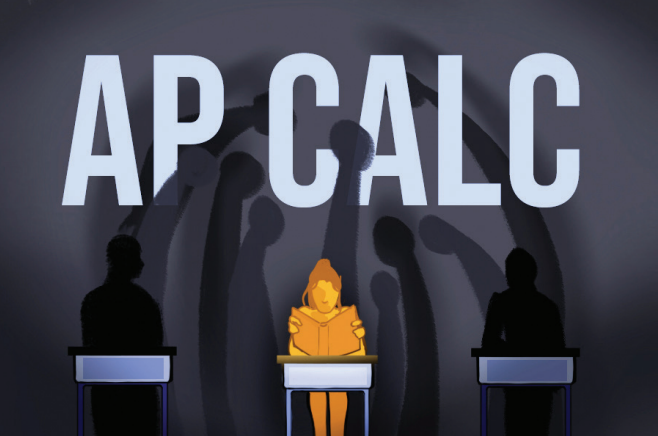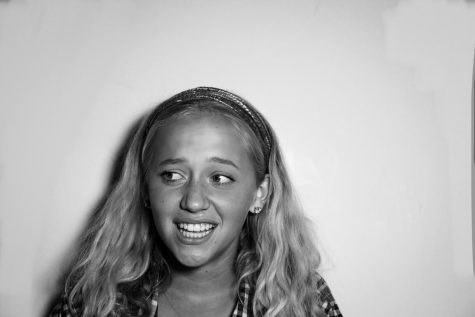9 vs 32
This year, significantly less girls are enrolled in AP Calculus BC than boys, and girls in AB or Statistics. The difference in numbers is having an effect on the girls in the class, though guidance counselors, teachers, and students hope it won’t discourage girls in the future.
People who identify as female make up a record low 28% of the highest math class at City.
April 15, 2022
Walk in the main doors, and head down the hallway to first period – math. In the room, the majority of seats are filled with boys, with only one girl in the class. Before the bell, in walks a second girl. The teacher takes attendance and it sinks in. This is it.
“Honestly, I wish we had equal representations of all subgroups in this class, including girls and boys. It seems like everyone has something to add in terms of the classroom environment,” Mr. Matt Miller, AP Calculus AB and BC teacher, said. “I sincerely hope there isn’t a detrimental effect on the two of them who are in Period 1. I hope they feel comfortable and valued just like everyone else, but I totally get that it might feel odd to be the only two girls.”
This year, AP Calc BC saw low numbers of people who identify as female. In two sections, there are 9 girls and 32 boys. In other math class options, there are more girls. There are 18 in AP Statistics, and 23 in AP Calc AB. That gives a ratio of 3.5 boys to one girl in BC and 2.5 girls in AB to one girl in BC.
“The number of students, in general, ebbs and flows from year to year. From what I remember, there has been a good balance of girls and boys in BC. I feel as though a few years ago we had more girls than boys in BC,” Miller said.
Similar to Miller, Alex Marsh, a City High Alum remembers higher numbers of girls in her AP Calc class.
“I don’t remember the specific numbers, but I know when I took AP Calc BC, there were more girls than 2 or 3,” Marsh said. “We might’ve had even numbers or more girls than guys.”
This problem is not unique to City High either. In 2019, women made up 48% of the workforce, but only 27% of STEM workers, according to the United States Census Bureau. STEM stands for Science, Technology, Engineering and Mathematics. It includes fields from engineers to information systems managers, to physical scientists, to mathematicians.
“I think that our graduation requirements help promote all students equally to take math and science. To graduate, students need three years of all of these and I know the school counselors promote taking math and science all four years of high school,” Guidance Counselor Mary Peterson said. “It also is fortunate that City High offers a wide range of math and science classes to help reach more students that are interested in math and science.”
The top colleges in the country achieve a nearly equal ratio of men students to women students. Harvard and Stanford have 51% women to 49% men, MIT has 47% women to 53% men, and Yale has an even 50-50 ratio. However, in certain classes, those ratios might not hold true. According to Nathalie Nunez ‘22, going into a class with only two other girls is intimidating and affects the classroom experience.
“I already don’t participate much in math classes, but having been one out of three girls in my class was intimidating. I felt like I needed to know everything,” Nunez said. “It also falls right into the stigma of men dominating the STEM fields.”
At the end of the previous year, students decided what classes they were going to take. Ms. Peterson hypothesizes that coming out of the year where many students were online, people might not have felt as confident in their learning, meaning more girls decided to start in AB or switched after a few days. Nunez ‘22 started in BC and switched during the first trimester to AB.
“AB is great. I instantly felt the pressure that came with taking BC come off my shoulders. AB flows at a really steady pace that’s easy to follow and maintain. I do miss my BC class though,” said Nunez ‘22.
Both AB and BC are AP classes. AB corresponds to Calculus 1, and BC corresponds to Calculus 1 &2. At the end of the year, all of the students in both classes decide whether or not to take the AP test. Those who do take the test can put that score towards testing out of Calculus classes in college. Ana Laura Leyser ‘22 decided to take BC, and doesn’t regret her decision.
“I’m enjoying the class even though it’s hard. I feel like I’m finally learning new math concepts for the first time in a while,” Leyser ‘22 said. “It makes me sad to see that so many smart girls who were in Precalculus last year didn’t think they could make it to BC. But it also makes me feel glad that I’ve continued with it and have shown everyone that girls can be in hard math classes.”
Guidance and administration at City High have many programs to promote women getting involved in the stem field and classes. Women In STEM is an international organization, in 10 countries with over 40 chapters and over 1,000 members. They encourage women in high school to increase female representation in STEM fields. On the smaller scale, Mr. Miller and other math teachers are promoting BC to anyone who thinks it might be for them.
“I have a good number of girls in AB who could easily have chosen to do BC this year. Those that I am thinking of chose AB for a variety of very pragmatic reasons (scheduling, future needs, etc). I think it’s important to also keep in mind that Calculus AB is a college level calculus class,” Mr. Miller said. “BC is a great class too. Basically, BC might be for you if you felt comfortable in Honors Precalculus. So, let that be your guide.”

































